Here at Patuxent, we like to consider houseplants to be like pets, except not only do we take care of them, they take care of us. Their greenery can transform a room into a deciduous jungle or a tropical paradise, all depending on what plants you choose. Not only are they beautiful to admire, but houseplants’ leaves boost air quality by producing oxygen and filter out harsh chemicals. Houseplants jumped in popularity in 2020, and we assure you their popularity is not going anywhere anytime soon. Here are the houseplants we think are must-haves in 2021.
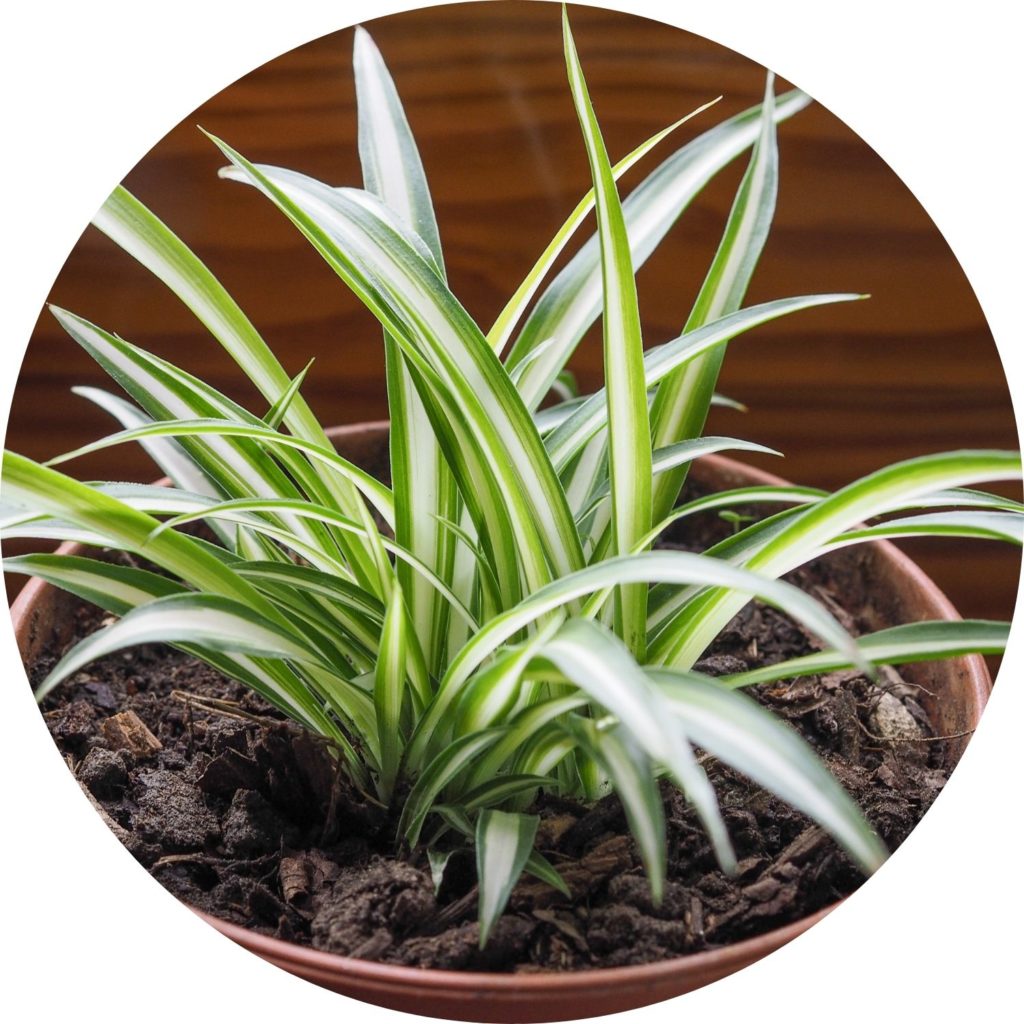
1. Spider Plant
Spider plants (Chlorophytum comosum) are resilient! These plants seem to thrive even if you forget about them for a while. Although they are so beautiful, it is almost impossible to forget them. They prefer to be planted in moist soil, near bright to moderate light. However, make sure you avoid placing them near any direct sunlight because their foliage will burn. During the spring and summer, fertilize your spider plant twice a month. Doing so will help them grow to their fullest potential. Don’t worry about fertilizing in the winter this is their growth dormancy period, and they could be damaged if fed.
Fun Facts:
-Spider plants are known for removing carbon monoxide, formaldehyde, benzene, and xylene from the air. Meaning, the unhealthy chemicals, and toxins in your home are filtered out all thanks to your spider plant.
-Spider plants are also a great choice for pet owners! This pet-friendly plant will not cause any harm to your little loved ones. It is crucial to always do your research before bringing a new plant into your home. Doing so will ensure there is no risk of harming your pets or children. However, spider plants are mild hallucinogens to cats. Do not worry the ASPCA has classified this plant as pet safe, but if your cat eats too much they could have a mild reaction.
2. Alocasia
Alocasia (Alocasia maharani) plants feel like they have been wrapped in velvet. The dark elephant ear-shaped leaves are showstoppers when placed in front of light backgrounds. These houseplants love moist, well-draining soil, bright, indirect sunlight, and a bi-yearly application of any all-purpose indoor plant food. Try potting your Alocasia in a white pot to give it a clean, crisp, modern look in your home.
Fun Facts:
-This houseplant originated in subtropical Asia and eastern Australia. There are many varieties of this tropical plant. They can also range in a variety of colors, from pale green to chartreuse, to almost black. This plant becomes the focal piece of any room it is placed in.
-Alocasia will communicate with you. Yes, you read right! This plant will tell you if it has received too much or too little water. How so, you might ask? When given too much water, it will sweat. This plant will lose excess moisture in a process called Guttation. Overwatering your plant a time or two won’t do any harm. Next time you water, simply give them less than the time before, and your plant will be happy again.
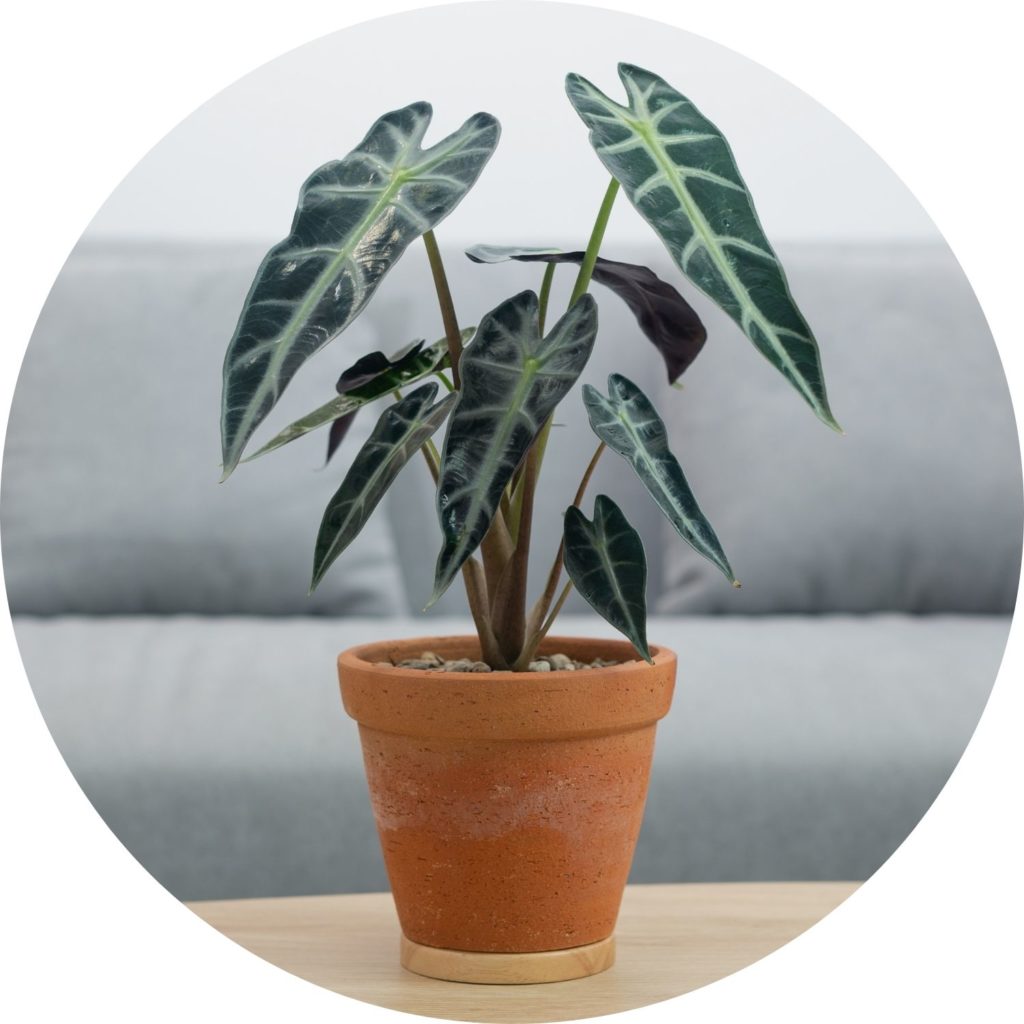
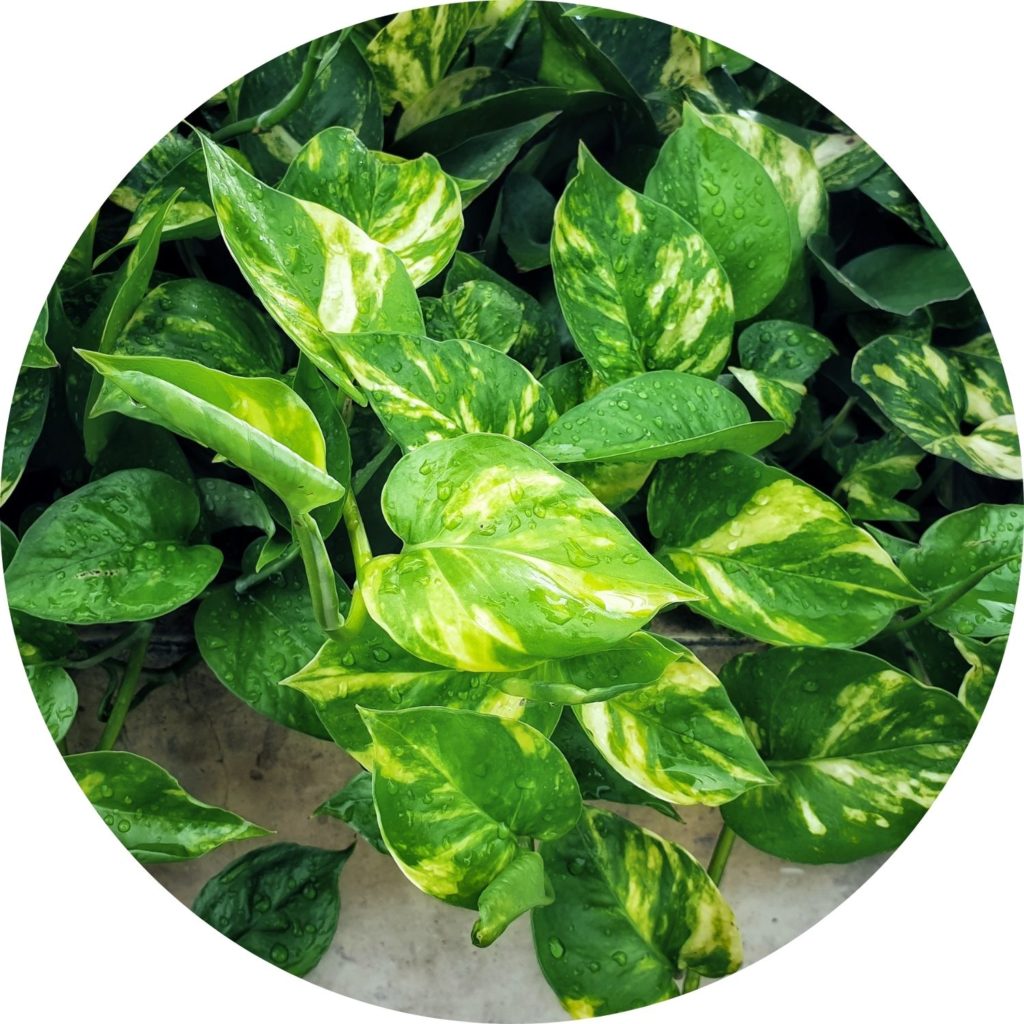
3. Golden Pothos
Golden Pothos (Epipremnum aureum) plants are easily one of the most popular houseplants around. They gained popularity due to their extremely low-maintenance caretaking routine. Even if you have a pink thumb, blue thumb, red thumb, or any other colored thumb aside from a green thumb, you will still be able to take care of this plant. Golden Pothos does best in low light and prefers to dry out in between waterings.
Fun Facts:
-Root rot, a disease caused by plant roots sitting in standing water for too long, is a common problem with most houseplants. However, Golden Pothos rarely succumbs to this condition. The best way to know if your plant needs water is if you notice its leaves drooping. Almost all the time, droopy leaves will perk back up after you give your plant thorough water. If you notice drooping leaves after watering, this is a sign that your plant has outgrown its pot and is ready for a newer, larger home.
-Golden pothos is another type of air-purifying plant. They are a general air purifier and help with allergies, asthma, etc. You get the best of both worlds with this plant; a beautiful vining plant to look at and a natural air purifier.
4. Snake Plant
Snake Plant (Sansevieria trifasciata) adds a unique look to your decor with its upright, leather strap-like leaves. Also known as the mother-in-law’s tongue, this houseplant is hardy and low-maintenance. Snake plants prefer bright, indirect light, but they can tolerate low-light environments. This houseplant can also tolerate an infrequent watering schedule.
Fun Facts:
-The Snake plant is on the NASA list of houseplants that clean and filter indoor air. NASA conducted a Clean Air Study in association with the Associated Landscape Contractors of America (ALCA) to research ways to clean the air in space stations. This study concluded that almost 20 houseplant species are, in fact, air-purifying plants.
-Not so fun fact, Snake Plants are toxic to pets. If their leaves are ingested, it could cause nausea and vomiting in your furry friends. As long as you keep your snake plant in a space away from your pets, you will not run into any trouble.
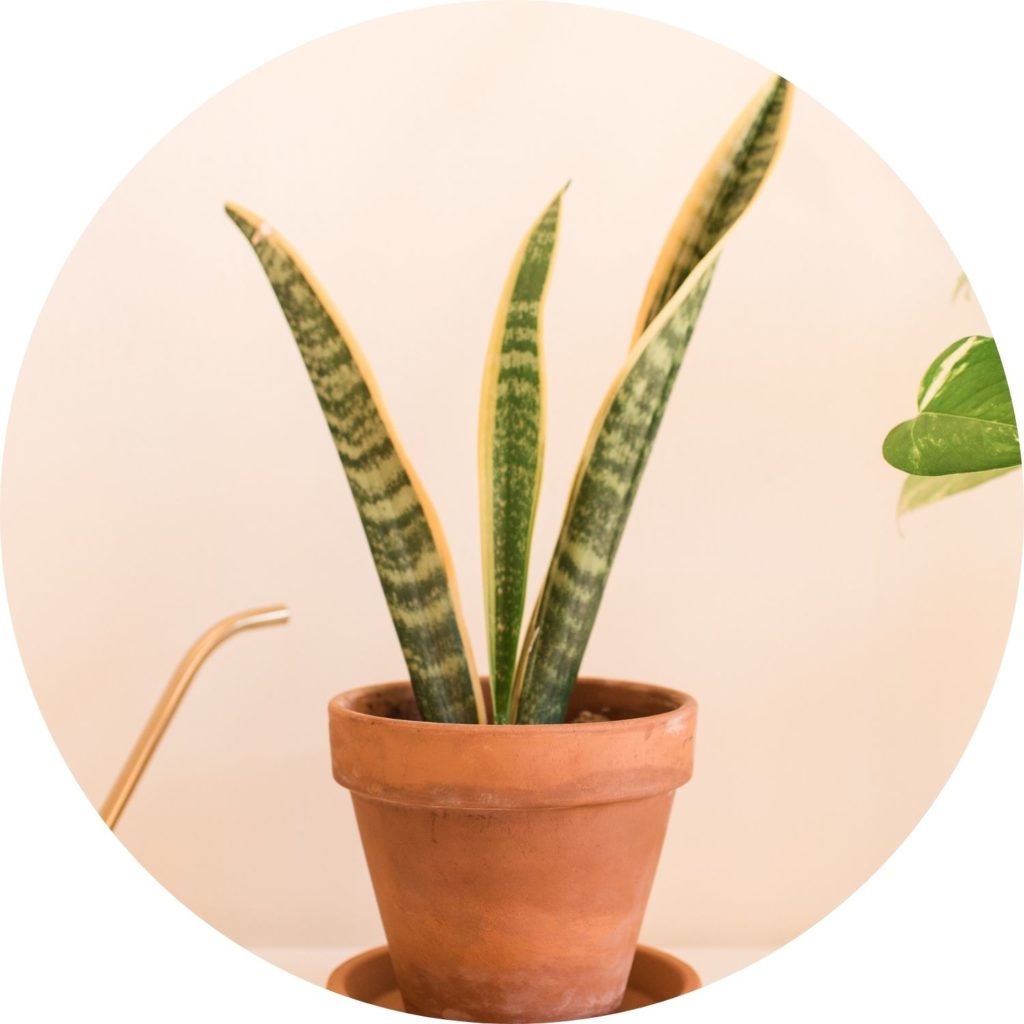
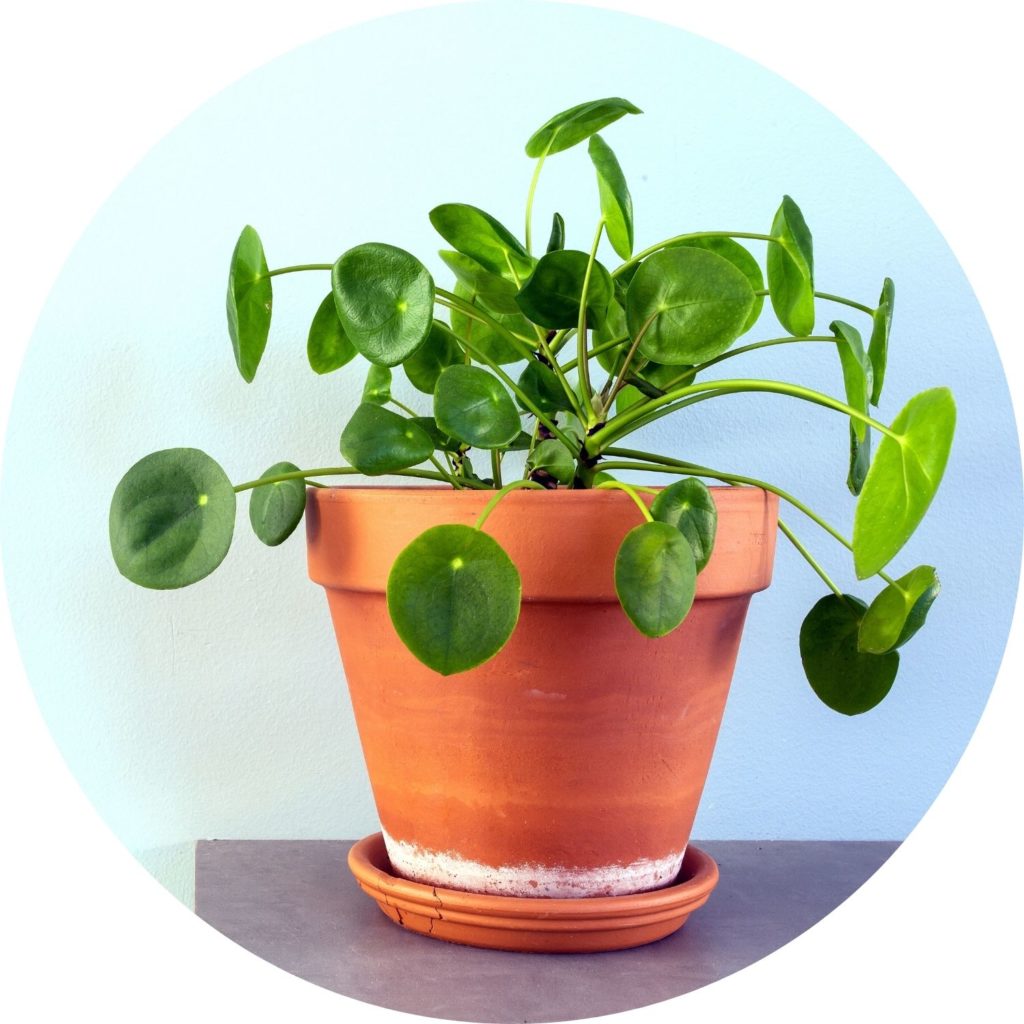
5. Chinese Money Plant
Chinese Money Plant (Pilea peperomioides) is loved for its impressive and unique foliage. Its leaves are rounded and glossy that look like little medallions. This houseplant is incredibly easy to grow and can even bloom tiny pink flowers in the summer. Pilea peperomioides is native to Yunnan and Sichuan provinces in southern China. This plant thrives in well-draining potting soil and a moderate watering schedule. Only fertilize the Chinese Money plant once a month during their growing season. Avoid fertilizing during the winter months.
Fun Facts:
-The money plant is known for bringing positivity, prosperity, and good luck to the area. Money plants are known for their positive effect on financial well-being. Who doesn’t want a plant that could bring them happiness and financial gain? This plant is also air-purifying and one of the best houseplants to energize the house by increasing oxygen flow.
-The Chinese Money Plant has the nickname of Pancake Plant. Its large, flay, circular leaves resemble little pancakes. Of course, we don’t recommend eating the leaves they probably won’t taste like real pancakes.
6. String of Hearts
String of Hearts (Ceropegia woodii) is a creeping semi-succulent vine. They are native to southwest Africa, and their trailing vines can grow up to 4 feet long. Their leaves are shaped like little hearts, hence their name! This houseplant is low-maintenance and grows beautifully when placed on a shelf or window sill to allow the plant to trail down as it grows. They thrive best in indirect, bright light, and their soil can dry out between watering.
Fun Facts:
-String of Hearts plants grow at a very fast speed and are fairly resistant to pests and diseases. They can live happily in a pot for several years without any issues. These plants are easy to take care of and will reward you with beautiful vines of heart-shaped foliage for years to come.
-String of Hearts plants are perfectly safe to keep around pets! They are considered non-toxic to animals. Of course, we don’t recommend allowing your pets to feast on your beautiful plants, but if they get a nibble or two, they will not be in any danger.
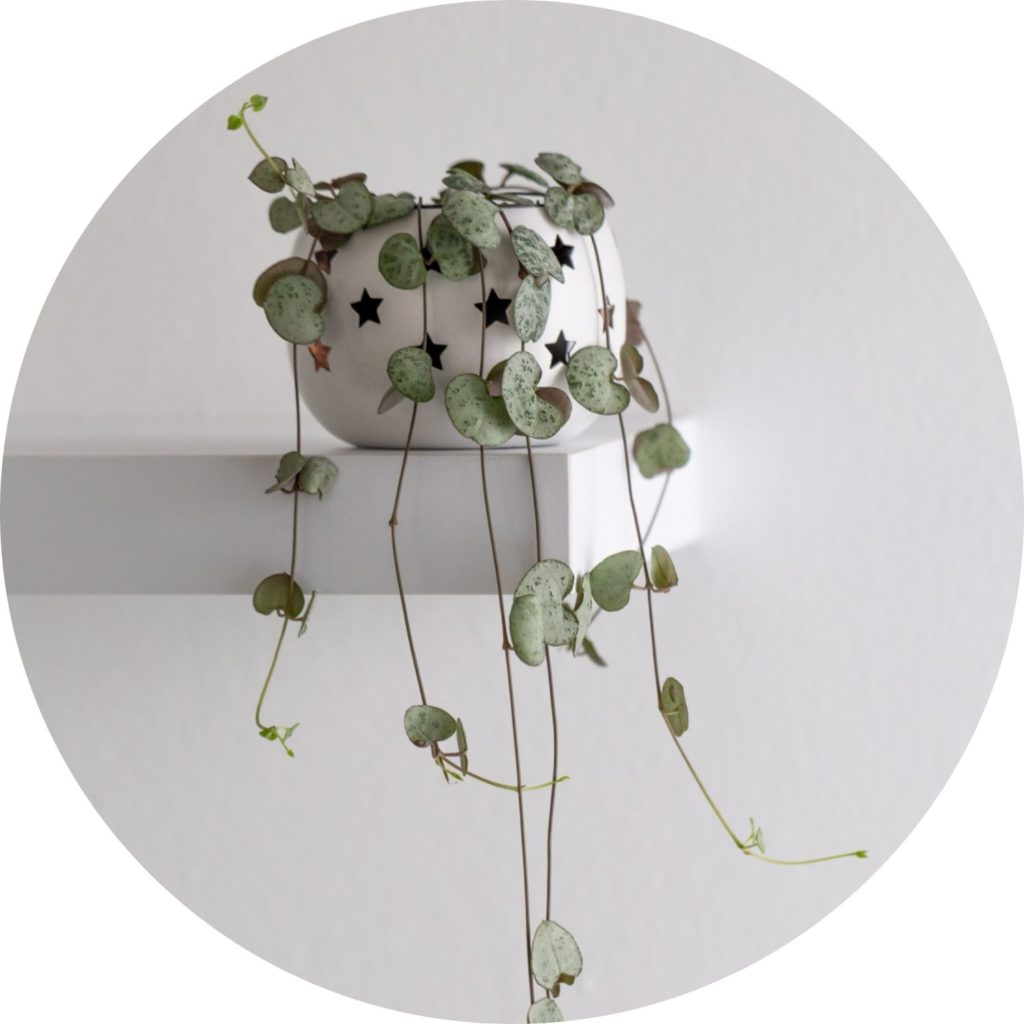
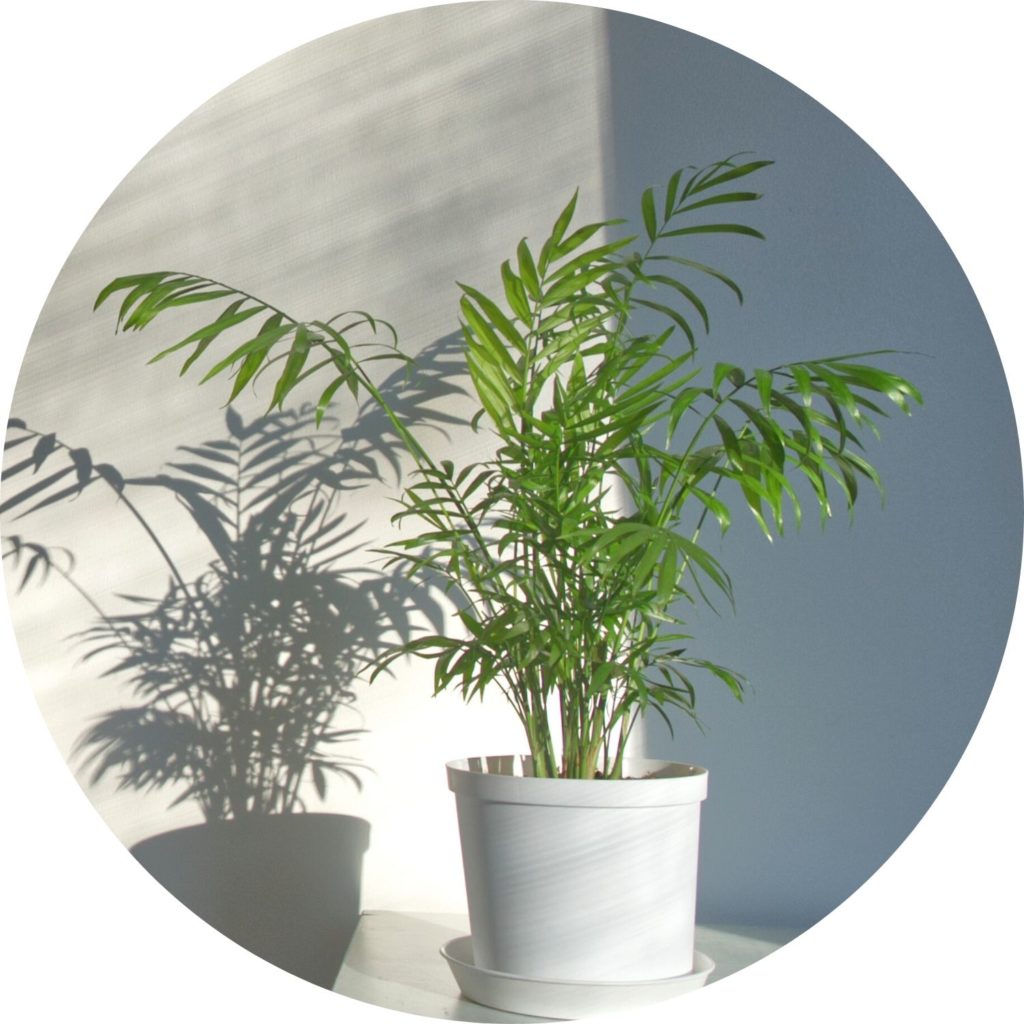
7. Bamboo Palm
Bamboo Palm (Chamaedorea) plants are the perfect tropical plant to add to your home. Also known as a Parlor palm, this plant prefers to be in bright light, well-draining soil, and humidity. They can survive in low lit areas as long as they receive enough water. However, it is important not to overwater your Bamboo palm. They are non-toxic to pets, so you can virtually place your parlor palm anywhere you know it would look best and thrive!
Fun Facts:
-It is hard to replicate outdoor humidity in the comfort of your home, but there are a few ways to do so to make your plant happy. You can place your palm on a tray of pebbles with water. Doing so will allow their soil to absorb small amounts of water slowly. You can also mist or purchase a small humidifier and place it next to your plants. The misting effect will replicate humidity perfectly.
-Bamboo palms are great for reducing airborne formaldehyde specifically released by new furniture. Crazy right? Have you ever heard of airborne formaldehyde that comes from new furniture; it’s real! This palm is another air-purifying plant that will help the air in your home stay clean, especially from a very particular chemical.
8. Aloe Vera
Aloe Vera (Aloe barbadensis) is a common plant and has been in homes and gardens for many years. This plant thrives best in bright, indirect light, moist soil, and a minimal watering schedule. Aloe Vera is native to southern Africa and is now commonly used as a household plant for its looks and medical remedies because of the sap it produces.
Fun Facts:
-The Aloe Vera plant produces a gel-like sap inside its foliage. This sap is known for healing cuts and burns. The gel product you buy from the store and put on your sunburns is mostly made of Aloe Vera sap. You can even drink Aloe Vera water to help detoxify your body.
-Aloe Vera plants regularly produce small plantlets. These plantlets can be carefully pruned and used to start a new plant. Aloe Vera plants are extremely easy to propagate because of their plantlets.
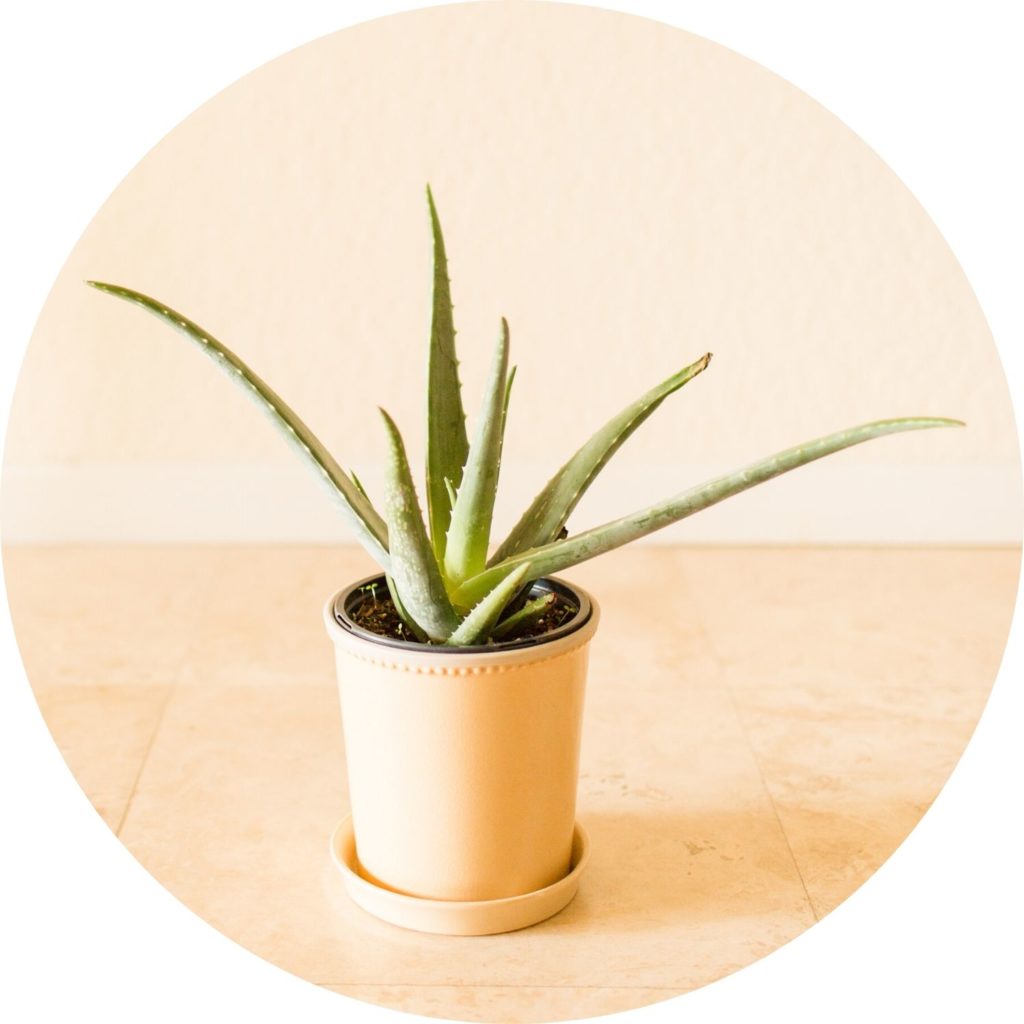

9. Monstera Deliciosa
Split Leaf Philodendron (Monstera deliciosa) is known as one of the most popular houseplant options. This plant can grow up to 36 inches with support. Monstera’s leaves are heart-shaped and can reach over a foot long and wide when grown to full maturity. Native to Central America, this plant’s leaves start full, and as the plant matures, the leaves develop holes and splits called fenestrations. This plant is easy to take care of and has no serious insect or disease problems!
Fun Facts:
-In the wild, Monstera Deliciosa produces delicious fruit. The fruit tastes like a combination of pineapple, mango, strawberries, and passion fruit; lots of yummy tropical fruit flavors packed into one! It is very rare for your indoor Monstera to ever produce fruit.
-The holes in a Monstera leaf have a purpose. In their natural habitat, tropical rainforests, Monstera leaves produced holes to protect the plant from being damaged by heavy rainfall and high winds.
10. Peperomia
Peperomia plants (Peperomia pellucida) come in over 1,000 varieties! This allows you to have multiple variations of the same plant in your home that require the same care instructions. Peperomia’s foliage is covered in white and green stripes. They work best in small spaces because this plant will never grow more than 18 inches tall. Peperomia prefers low to moderate light and moist, well-drained soil conditions.
Fun Facts:
-Peperomia is yet another air-purifying plant. They can effectively remove formaldehyde from the air. Keeping this plant around your home will not only add a pop of nature and greenery but help keep your home’s air nice and clean.
-Peperomia is non-toxic to pets and children. You will not have to worry about where you place this plant in your home. It is always important to do your research on what plants are safe or not safe to bring into your home if you have children or pets.
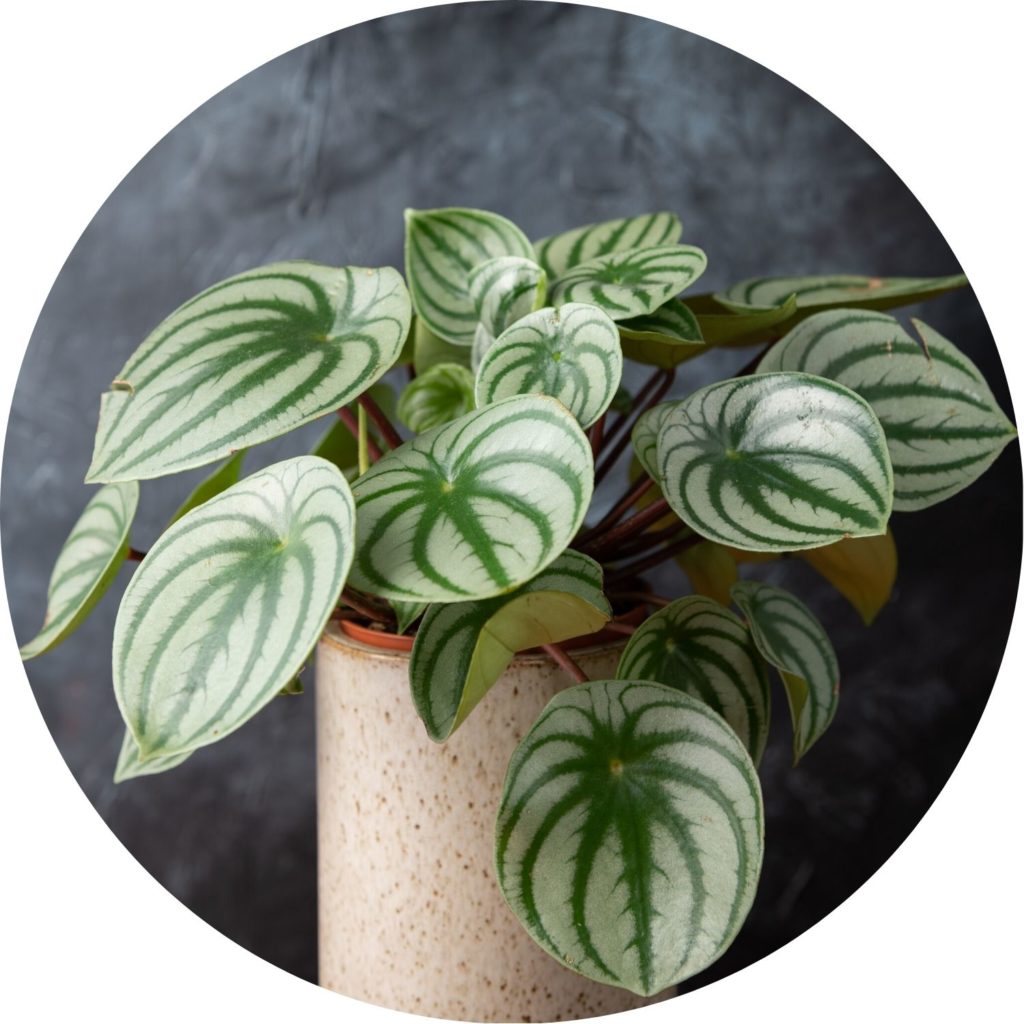
Come into Patuxent Nursery today to shop our huge selection of houseplants! We will help you find the perfect plant or plants to fit your home. Whether it’s a tree, potted plant, or vining hanging basket plant, we have all sorts of options available.

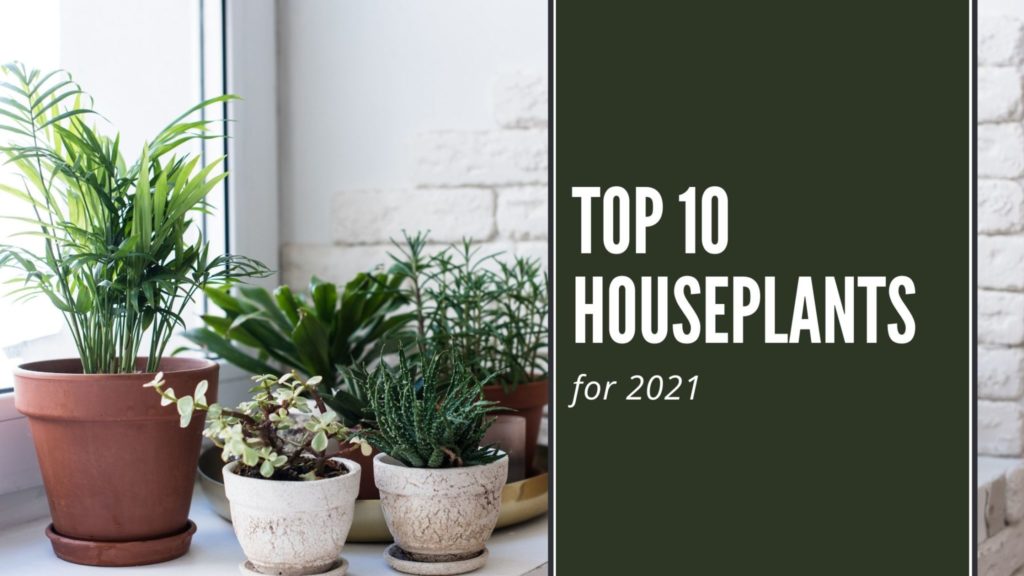
“Wow, 2021 is truly the year of houseplants! It’s like our homes have turned into lush, green jungles, and I’m loving every leafy moment of it. 🌿😍